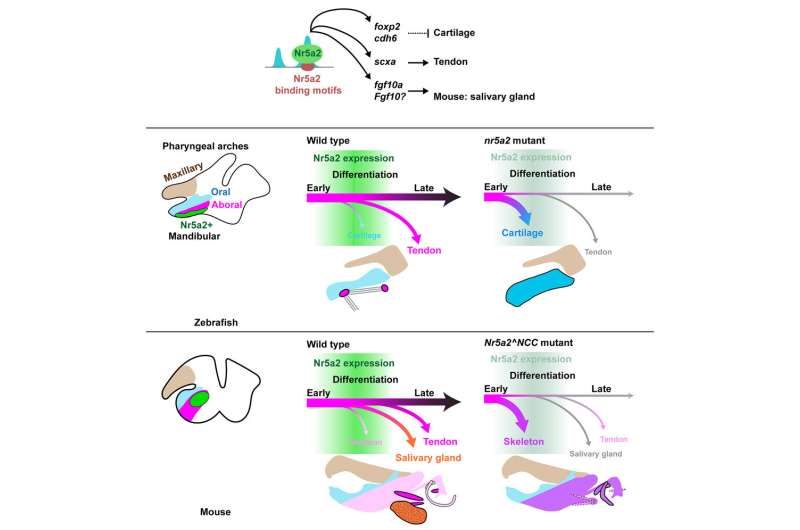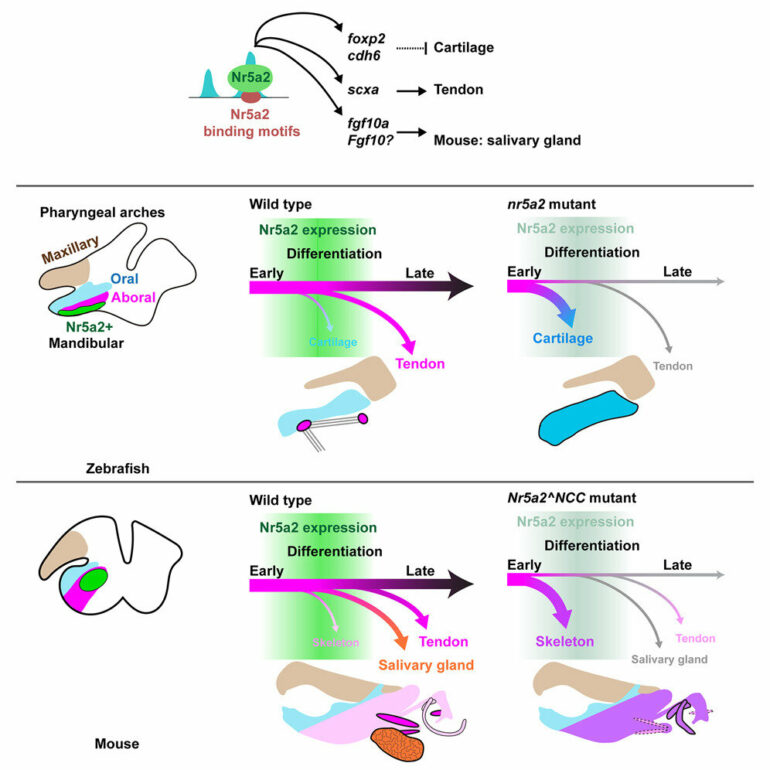A USC-led team of scientists has made a drool-worthy discovery about how tendons and salivary glands develop in the jaw. Their results are published in a new study in Developmental Cell.
In order for our jaws to function, they require not only a precisely patterned skeleton, but also tendons that connect the jaw skeleton to muscles and salivary glands that lubricate the mouth. Remarkably, the skeleton, tendons, and glands all derive from the same population of stem cells, which arise from a cell population known as neural crest. How these neural crest-derived cells know to make the right type of cell in the right location has remained a mystery.
To begin answering this question, first author Hung-Jhen (Olivia) Chen from the lab of corresponding author Gage Crump, professor and vice-chair of stem cell biology and regenerative medicine at the Keck School of Medicine of USC, and colleagues examined all the genes that were active in the developing face of zebrafish. They then honed in on one particular gene, Nr5a2, that was active in a region of the face that makes tendons and glands, but not skeleton.
To understand the role of Nr5a2, the scientists created zebrafish lacking this gene. These mutant zebrafish generated excess cartilage and were missing tendons in their jaws.

Graphical abstract. © Developmental Cell (2023). DOI: 10.1016/j.devcel.2023.02.011
The scientists also developed mice lacking this gene specifically in their neural crest cells. These mice not only had skeletal and tendon defects in their jaws, but also failed to develop salivary glands. Similar defects were also seen in the middle ear, reflecting a dramatic evolutionary transition in which part of the fish jaw became the mammalian middle ear.
To clarify how this was happening, the scientists examined the structure of the genome in zebrafish lacking Nr5a2. They found that Nr5a2 was essential for opening up regions of the genome that enable neural crest cells to maintain their stem cell features, while at the same time priming these cells to form tendons and salivary glands later in jaw development.
“Discovery of a very specific role of Nr5a2 in jaw patterning was unexpected, as this gene had previously been shown to be essential for maintaining embryonic stem cells,” said Crump. “Our work shows how a key stem cell factor can be used in a different way later in development to control how diverse cell types are made.”
More information:
Hung-Jhen Chen et al, Nuclear receptor Nr5a2 promotes diverse connective tissue fates in the jaw, Developmental Cell (2023). DOI: 10.1016/j.devcel.2023.02.011
Provided by
Keck School of Medicine of USC
Citation:
How to assemble a complete jaw (2023, March 10)
